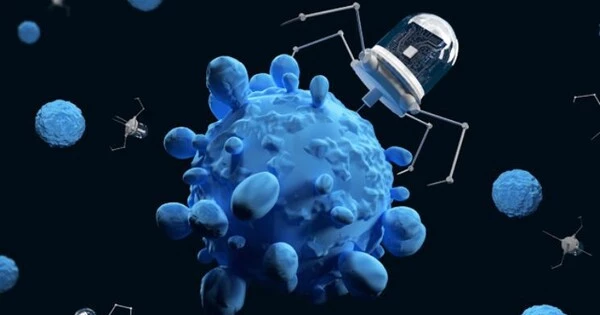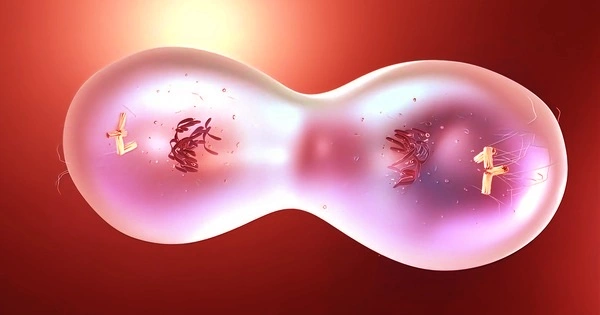Novel diagnostic tools that capture molecular activity at a disease site in vivo are required with the advent of personalized medicine to better understand an individual patient’s disease state, inform clinical decision-making, and monitor therapeutic response.
Cancer is distinguished by a number of key biological processes known as “hallmarks of cancer,” which remodel cells and their immediate surroundings to allow tumors to form, grow, and thrive. Many of these changes are mediated by specific genes and proteins that work in tandem with other cellular processes, but the specifics differ between cancer types and even between patients.
Sensitive tools for measuring protein or gene expression, even on a single cell level, have assisted researchers in understanding the various cell types present in a tumor’s microenvironment and how this composition changes after treatment. However, these assays do not always show which proteins are active or relevant to tumor progression, nor do they allow clinicians to track the disease’s progression or response to treatment in a noninvasive manner. A protein, for example, could be present in a cancer cell as a bystander but not an active participant in its cellular transformations. Enzymes, which catalyze biochemical reactions within cells, may provide a more precise picture of which genes or proteins to target at any given time.
In work recently published in Nature Communications, researchers from the MIT Koch Institute for Integrative Cancer Research have developed a set of enzyme-targeting nanoscale tools to monitor cancer progression and treatment response in real time, map enzyme activity to precise locations within a tumor, and isolate relevant cell populations for analysis.
We hope that this new suite of tools can be useful in the clinic and the lab alike. With further development, the nanosensors could be used by clinicians to tailor treatments to a patient’s specific cancer, and to monitor cancer progression and treatment response.
Sangeeta Bhatia
“We hope that this new suite of tools can be useful in the clinic and the lab alike,” says Sangeeta Bhatia, the John J. and Dorothy Wilson Professor of Health Sciences and Technology, professor of electrical engineering the computer science, and senior author of the study. “With further development, the nanosensors could be used by clinicians to tailor treatments to a patient’s specific cancer, and to monitor cancer progression and treatment response, while researchers could use them to better understand the molecular biology of cancer and develop new tools to diagnose, track, and treat the disease.”
Bhatia is also a member of MIT’s Koch Institute for Integrative Cancer Research and Institute for Medical Engineering and Science. The study, conducted in collaboration with the laboratory of Tyler Jacks, was led by Ava Amini (Soleimany), a former graduate student from the Bhatia laboratory; and postdoc Jesse Kirkpatrick, also from the Bhatia lab.
Tracking tumors in real time
The Bhatia laboratory has been developing noninvasive urine tests for the detection of cancer, including colon, ovarian, and lung cancer, for several years. The tests rely on nanoparticles that bind to tumor proteins known as proteases. Proteases are enzymes that cleave proteins and break them down into smaller components by acting as molecular scissors. Proteases aid cancer cell escape from tumors by severing the extracellular protein network that holds cells in place.
Peptides (short protein fragments) that target cancer-linked proteases are coated on the nanoparticles. When the nanoparticles reach the tumor site, the peptides are cut and biomarkers that can be detected in the urine are released.

In the current study, the researchers tested whether they could use this technology not just to detect cancer, but to track the development of cancer and its response to treatments accurately and sensitively over time. The team created a panel of 14 nanoparticles designed to target proteases overexpressed in non-small cell lung cancer induced in a mouse model. These nanoparticles had been adapted to release barcoded peptides when they encounter dysregulated enzymes in the tumor microenvironment.
Each nanosensor was able to track different patterns of protease activity, which changed dramatically as the tumor progressed. After treatment with a lung cancer-targeting drug, the researchers were able to find signs tumor regression quickly, within just three days of administering treatment.
Cell maps and populations
While the current nanosensor technique can be used to track tumor progression and treatment response in general, it cannot shed light on the specific cellular process at work.
“Our urine reporter, like many of the tools available to assess molecular markers for cancer, treats the body like a black box,” says Kirkpatrick. “While we get some information about the disease’s state, we wanted to learn more about the cells or proteins that are causing the disease to behave in a specific way.”
Having identified nanosensors of interest, researchers mapped where in the tumor microenvironment the enzymes acting on these sensors were active. They adapted their nanoprobes to leave behind fluorescent tags when they are cleaved from the nanosensor, assigning different tags to different proteases. After applying the nanoprobes to samples of lung tissue, they looked for patterns in how the tags were distributed.
Hallmark observations
The team hopes to identify the specific protease active in pericytes and investigate its role in angiogenesis in the future. They hope to use this knowledge to create therapy formulations that can be delivered to patients to disrupt the recruitment and formation of blood vessels associated with tumor growth.
Ultimately, the team envisions panels of nanoprobes targeting multiple aspects of cancer in patients simultaneously and noninvasively. Proliferative signaling, evasion of growth suppressors, genome instability, resistance to cell death, dysregulated metabolism, and activation of invasion and metastasis are also hallmarks of cancer. Because cancer alters protease activity across all of these processes, the team’s nanoprobes could be designed to target each of these processes, providing a comprehensive picture of tumor activity that drives the disease. Researchers interested in investigating key biological phenomena in cancer models, as well as clinicians interested in monitoring cancer progression noninvasively and selecting treatments for their patients, could benefit from the approach.
















